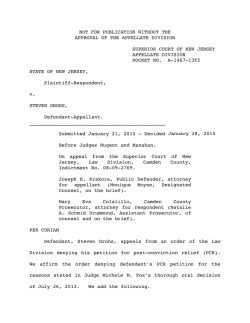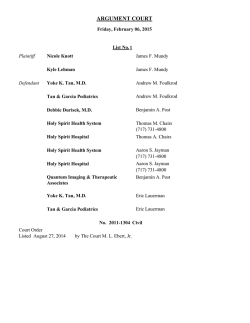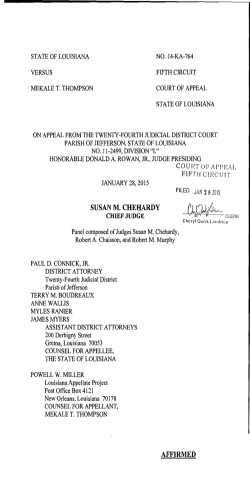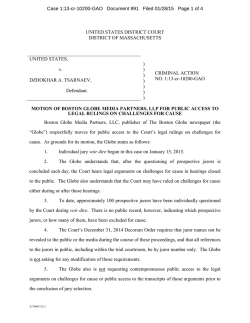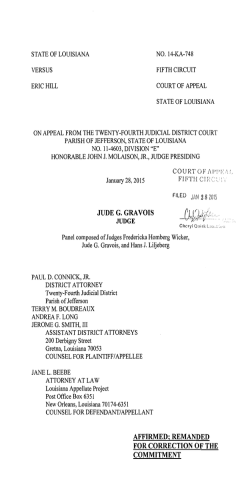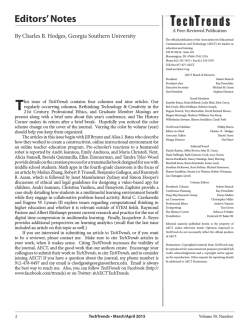
State of Tennessee v. Randy Poole aka Bobby Neal
IN THE COURT OF CRIMINAL APPEALS OF TENNESSEE AT JACKSON Assigned on Briefs December 2, 2014 STATE OF TENNESSEE v. RANDY POOLE aka BOBBY NEAL Appeal from the Criminal Court for Shelby County No. 130-01570 W. Mark Ward, Judge No. W2014-00123-CCA-R3-CD - Filed January 30, 2015 Following a jury trial, the Defendant, Randy Poole, aka Bobby Neal, was convicted of facilitation of aggravated burglary for which the trial court sentenced him to eight years at thirty-five percent. See Tenn. Code Ann. §§ 39-11-403, -14-403. In this direct appeal, the Defendant first contends that the evidence was insufficient to support his conviction because it was based upon uncorroborated accomplice testimony. He further argues that the trial court committed plain error by failing to instruct the jury that accomplice testimony must be corroborated and by failing to instruct the jury on accomplice testimony procured via a plea agreement. Because we conclude that the accomplice testimony was adequately corroborated and that the Defendant has failed to show that he is entitled to plain error review of the remaining issues, we affirm the judgment of the trial court. Tenn. R. App. P. 3 Appeal as of Right; Judgment of the Criminal Court Affirmed D. K ELLY T HOMAS, J R., J., delivered the opinion of the court, in which J AMES C URWOOD W ITT, J R., and R OGER A. P AGE, JJ., joined. Stephen C. Bush, District Public Defender; and Phyllis L. Aluko (on appeal) and Charles Brent Walker (at trial), Assistant Public Defenders, for the appellant, Randy Poole. Herbert H. Slatery, III, Attorney General and Reporter; Lacy Wilber, Senior Counsel; Amy P. Weirich, District Attorney General; and Nicole Germain and Omar Zia Malik, Assistant District Attorneys General for the appellee, State of Tennessee. OPINION FACTUAL BACKGROUND In March 2013, the Shelby County Grand Jury returned an indictment charging the Defendant and co-defendant, Christopher Sims, with aggravated burglary. The Defendant proceeded to trial on October 7, 2013. At trial, Matthew Carragher testified that he owned a house on Hodges Street in Memphis and that it was a rental property, which was managed by a property management company. The property was vacant on September 11, 2012. On that day, he received a phone call from the management company informing him that the police had “caught two guys coming out of the house trying to steal the stove and the refrigerator.” He testified that he had not given the Defendant, or anyone else, permission to enter the house that day. Christopher Sims testified that he was currently imprisoned after pleading guilty to the aggravated burglary of the Hodges Street house. Several days before September 11, 2012, Sims went to Hodges Street and entered the house through an unlocked back door. He first testified that he knew the house was vacant by “just looking around,” although he later stated that the Defendant had told him about the vacant house. Sims saw that there was a stove and refrigerator in the house, but he left the house without removing any property. The Defendant was not with Sims during this initial entry into the house. Sims testified that on the afternoon of September 11, 2012, he and the Defendant discussed the appliances located at the Hodges Street house. Because neither Sims nor the Defendant had a vehicle, the Defendant enlisted the help of a friend who owned a truck to help them transport the appliances. Sims testified that the driver picked both himself and the Defendant up at the home of Cheryl Fleming, Sims’s mother and, at the time, the Defendant’s girlfriend. Initially, Sims testified that the appliances had already been taken out of the house and were sitting outside when the three men arrived at the house. However, he later testified that the men arrived at the house, parking the truck on the street in front of the house, and that he and the Defendant then moved the appliances to the “middle of the backyard.” Sims testified that it took the men about five to ten minutes to move the appliances from the house into the backyard. Roshella Mabroy1 testified that she lived in the house next door to the burgled house on Hodges Street and that she was home all day on September 11, 2012. She heard a vehicle pull into her driveway around 3:30 p.m. and went to the side door of her house to see who had arrived. She was expecting her landlord to arrive around that time to do some repair work at her house. However, upon looking out the door, she saw a truck that she did not recognize in her driveway. She noticed that there were three men in the truck, whom she recognized “from the neighborhood.” Two men were in the cab of the truck, and a third man was sitting 1 At several points in the record Ms. Mabroy’s name is spelled “Mabory”; however, we have adopted the spelling that Ms. Mabroy provided to the court reporter. -2- in the truck bed. She identified the Defendant as the passenger in the cab of the truck and identified Christopher Sims as the man riding in the truck bed. Ms. Mabroy stuck her head out the door and told the men to get out of her driveway. She watched as the truck pulled out of her driveway and then backed into the driveway nextdoor. According to Ms. Mabroy, the “young fellow in the back got out,” while the Defendant and the driver remained in the truck. She watched as Sims opened the gate to the fence, and at that time, she noticed a stove and refrigerator sitting inside the fenced backyard. She had never seen appliances sitting outside of the house before and had not noticed anything unusual before that day. However, Ms. Mabroy admitted that she was not certain that the appliances had not been outside for several days because she could not see inside the fence when the gate was closed. Upon seeing the stove and refrigerator, she “immediately” said, “don’t bother that stove, that refrigerator, leave that alone.” Ms. Mabroy said that the Defendant, who was “slouched down in the truck,” asked her, “[Y]ou going to snitch[?]” She responded, telling him, “[Y]ou’re not going to be able to make it out of the driveway because it’s broad daylight and all my neighbors [are] looking at you.” While she was talking to the Defendant, Sims “grabbed the refrigerator . . . and was going to put it [in the truck],” but she told him not to, and the men left. She testified that Sims was the only person she saw outside the truck, touching the appliances that day. Sims’s recollection of that day differed in several respects from Ms. Mabroy’s testimony. According to Sims, after he and the Defendant moved the appliances outside, the driver mistakenly backed his truck into Ms. Mabroy’s driveway. Sims testified that both he and the Defendant were outside the truck at the time it was backing into the driveway. Sims testified that when Ms. Mabroy came out of the house, he was “trying to get out of the way . . . [and] [the Defendant] was talking to her.” He also testified that he and the Defendant actually loaded the appliances onto the truck, but subsequently unloaded them and fled the scene after Ms. Mabroy threatened to call the police. Sims denied that the State had promised him anything in exchange for his testimony and instead had told him to “tell the truth and be honest” about what happened that day. Gregory Scott of the Memphis Police Department (MPD) testified that he was the first responder to a “prowler call” on Hodges Street on September 11, 2012. He explained that a “prowler call” means that someone is at a residence that does not belong there. Upon arriving at the scene, Officer Scott walked to the rear of the house where he saw a stove and refrigerator sitting about six to ten feet from the back door, which was open. He described the fence enclosing the backyard as a “privacy fence.” Officer Scott testified that no suspects were at the property when he arrived. He spoke to Ms. Mabroy, who recounted what she had -3- witnessed. He testified that he did not recall collecting fingerprints from the appliances or any surfaces inside the house, although he could not state conclusively that no fingerprints were taken. James McDonald, a Detective with the MPD, testified that he was the primary officer responsible for investigating the burglary. Det. McDonald testified that he went to the house on September 12, 2012, that the appliances had been moved back into the house, and that the house was locked. To his knowledge, no fingerprints were taken from the appliances or from any other surfaces at the house. When Det. McDonald received an initial report about the incident, the Defendant had already been listed as a suspect and was subsequently brought in for questioning. During the interrogation, the Defendant denied any involvement in the burglary, and the police did not take an official statement. Cheryl Fleming testified for the defense. Ms. Fleming stated that Christopher Sims is her son and that she was dating the Defendant on September 11, 2012, but that they were no longer together. At the time, both Sims and the Defendant lived with her on Buntyn Street, which is located one street over from Hodges Street. Ms. Fleming testified that on September 11, 2012, the Defendant was with her the entire morning and through the early afternoon. Sims was at the house that morning but left around 1:00 or 2:00 p.m. A little later, the Defendant “called for a ride”; Sims returned to the house; and a gray truck, driven by a man identified at trial only by his nickname, “TK”, arrived at the house. Sims exited the house and walked down an alley behind Ms. Fleming’s house that leads to Hodges Street. Shortly thereafter, the Defendant got in the truck with TK, and the men drove towards Hodges Street. Ms. Fleming clarified that Sims left the house on foot prior to the Defendant and TK’s departure in the truck. She also stated that up until this time, the Defendant had been with her the entire day. Ms. Fleming followed Sims down the alley because she “was trying to stop them from doing whatever they was trying to do because [she] knew it was wrong.” After seeing the men arrive on Hodges Street, Ms. Fleming decided to return to her house because she did not think it was “a good idea to stay around . . . because [she] didn’t want to be a part of it.” The Defendant testified that he was home with Ms. Fleming on September 11, 2012, and between 2:00 and 3:00 p.m., Sims came to the house with his friend, Dennis Hodges. The Defendant testified that he was not “aware personally” of any refrigerator or stove before speaking with Sims that afternoon. After a short conversation, Sims and Mr. Hodges left the house. The Defendant then called his friend, TK, for a ride. TK came to the house and picked -4- the Defendant up, and they drove to Hodges Street. TK was driving the truck, and the Defendant was in the cab on the passenger side. The Defendant testified that when he and TK first drove to Hodges Street, Sims and Mr. Hodges were nowhere to be seen. The Defendant and TK returned to Ms. Fleming’s house; Sims came back into the house; and the men again departed to Hodges Street. When they arrived back on Hodges Street, TK backed the truck into Ms. Mabroy’s driveway, but the truck was moved into the driveway next door after Ms. Mabroy came outside and told them to get out of her driveway. Sims was attempting to get the stove onto the truck but abandoned the attempt due to Ms. Mabroy’s threats to call the police. The Defendant testified that he did not get out of the truck, touch either of the appliances, or enter the house at any point. According to the Defendant, Mr. Hodges helped Sims move the appliances out of the house, and “from [his] understanding” the appliances were “sitting out already in the backyard” before they drove to the house that afternoon. The Defendant spoke to Det. McDonald about a week after the incident. He denied knowing anyone in the neighborhood and denied any involvement in the burglary. At trial, the Defendant admitted that he lied when he said he did not know anyone in the neighborhood. However, he maintained that he was telling the truth about never entering the house and about not being aware of the burglary until after it occurred. On cross-examination, the Defendant said that it was “difficult for [him] to try and explain [his] whole testimony” without being able to testify about what Sims said to him, and he further stated that it was Mr. Hodges who helped Sims move the appliances out of the house. The Defendant said that, although Ms. Mabroy thought he asked “you going to snitch[?]” what he really said to her was “you with the s--t.” He explained that this means “you ain’t cool, like you’re not a cool person” and that he said this to Ms. Mabroy because she was threatening to call the police. The jury convicted the Defendant of the lesser included offense of facilitation of aggravated burglary, and the trial court sentenced the Defendant to eight years to be served at thirty-five percent. ANALYSIS Initially, it is necessary to briefly discuss the procedural history of this case. The trial court sentenced the Defendant and entered a judgment of conviction on December 5, 2013. The Defendant filed a motion for new trial on January 9, 2014, approximately four days past the thirty-day requirement of Tennessee Rule of Criminal Procedure 33. Based on the late filing, the trial court questioned its jurisdiction to hear the motion but nevertheless denied the -5- motion for new trial on the merits on January 15, 2014. This court entered an order waiving the timely filing of the Defendant’s notice of appeal on January 24, 2014, and the Defendant filed his notice of appeal on January 31, 2014. “A motion for new trial shall be in writing or, if made orally in open court, be reduced to writing, within thirty days of the date the order of sentence is entered.” Tenn. R. Crim. P. 33(b) (emphasis added). The thirty-day period for filing a motion for new trial “is jurisdictional and cannot be expanded.” State v. Hatcher, 310 S.W.3d 788, 800 (Tenn. 2010). As such, “[a] trial judge does not have jurisdiction to hear and determine the merits of a motion for new trial which has not been timely filed.” State v. Bough, 152 S.W.3d 453, 460 (Tenn. 2004). Failure to timely file a motion for new trial causes all issues to be “deemed waived except for sufficiency of [the] evidence and sentencing.” Bough, 152 S.W.3d at 460; see Tenn. R. App. P. 3(e). Likewise, a notice of appeal must be filed “within [thirty] days after the date of entry of the judgment appealed from.” Tenn. R. App. P. 4(a). An untimely motion for new trial will not toll this thirty-day period. State v. Davis, 748 S.W.2d 206, 207 (Tenn. Crim. App. 1987). While this court may waive the untimely filing of a notice of appeal pursuant to Tennessee Rule of Appellate Procedure 4(a), we do not have the authority to waive the untimely filing of a motion for new trial. State v. Stephens, 264 S.W.3d 719, 728 (Tenn. Crim. App. 2007). Because the Defendant filed his motion for new trial four days late, the trial court was without jurisdiction to rule on the motion. Nevertheless, on appeal the Defendant may still challenge the sufficiency of the evidence, and we may also review issues normally considered waived pursuant to the plain error doctrine. Tenn. R. App. P. 36(b). I. Sufficiency of the Evidence On appeal, the Defendant first argues that the evidence was insufficient to convict him of facilitation of aggravated burglary. In particular, the Defendant contends that the only evidence establishing that he provided assistance prior to the commission of the aggravated burglary was the uncorroborated testimony of Sims, an accomplice. The State responds that the accomplice’s testimony was adequately corroborated and that the evidence was therefore sufficient to support the Defendant’s conviction. An appellate court’s standard of review when the defendant questions the sufficiency of the evidence on appeal is “whether, after viewing the evidence in the light most favorable to the prosecution, any rational trier of fact could have found the essential elements of the crime beyond a reasonable doubt.” Jackson v. Virginia, 443 U.S. 307, 319 (1979). This court -6- does not reweigh the evidence; rather, it presumes that the jury has resolved all conflicts in the testimony and drawn all reasonable inferences from the evidence in favor of the state. See State v. Sheffield, 676 S.W.2d 542, 547 (Tenn. 1984); State v. Cabbage, 571 S.W.2d 832, 835 (Tenn. 1978). Questions regarding witness credibility, conflicts in testimony, and the weight and value to be given to evidence were resolved by the jury. See State v. Bland, 958 S.W.2d 651, 659 (Tenn. 1997). A guilty verdict “removes the presumption of innocence and replaces it with a presumption of guilt, and [on appeal] the defendant has the burden of illustrating why the evidence is insufficient to support the jury’s verdict. Bland, 958 S.W.2d at 659; State v. Tuggle, 639 S.W.2d 913, 914 (Tenn. 1982). A guilty verdict “may not be based solely upon conjecture, guess, speculation, or a mere possibility.” State v. Cooper, 736 S.W.2d 125, 129 (Tenn. Crim. App. 1987). However, “[t]here is no requirement that the State’s proof be uncontroverted or perfect.” State v. Williams, 657, S.W.2d 405, 410 (Tenn. 1983). Put another way, the State is not burdened with “an affirmative duty to rule out every hypothesis except that of guilt beyond a reasonable doubt.” Jackson, 443 U.S. at 326. The following standard “applies to findings of guilt based upon direct evidence, circumstantial evidence, or a combination of [both] direct and circumstantial evidence.” State v. Pendergrass, 13 S.W.3d 389, 392-93 (Tenn. Crim. App. 1999). Our supreme court has held that circumstantial evidence is as probative as direct evidence. State v. Dorantes, 331 S.W.3d 370, 379-81 (Tenn. 2011). In doing so, the supreme court rejected the previous standard which “required the State to prove facts and circumstances so strong and cogent as to exclude every other reasonable hypothesis save the guilt of the defendant, and that beyond a reasonable doubt.” Id. at 380 (quoting State v. Crawford, 470 S.W.2d 610, 612 (Tenn. 1971) (quotation marks omitted). Instead, “direct and circumstantial evidence should be treated the same when weighing the sufficiency of such evidence.” Dorantes, 331 S.W.3d at 381. The reason for this is because with both direct and circumstantial evidence, “a jury is asked to weigh the chances that the evidence correctly points to guilt against the possibility of inaccuracy or ambiguous inference . . . .” Id. at 380 (quoting Holland v. United States, 348 U.S. 121, 140 (1954)). To that end, the duty of this court “on appeal of a conviction is not to contemplate all plausible inferences in the [d]efendant’s favor, but to draw all reasonable inferences from the evidence in favor of the State.” State v. Sisk, 343 S.W.3d 60, 67 (Tenn. 2011). It is well-established in Tennessee that “a conviction may not be based solely upon the uncorroborated testimony of an accomplice.” State v. Shaw, 37 S.W.3d 900, 903 (Tenn. 2001) (citing State v. Bigbee, 885 S.W.2d 797, 803 (Tenn. 1994); Monts v. State, 379 S.W.2d 34,43 (Tenn. 1964)). To qualify as an accomplice, it is not enough that the witness possess -7- guilty knowledge, be morally delinquent, or even have participated in a separate but related offense. See State v. Lawson, 794 S.W.2d 363, 369 (Tenn. Crim. App. 1990). The test is whether the alleged accomplice could be indicted for the same offense with which the defendant is charged. State v. Green, 915 S.W.2d 827, 831 (Tenn. Crim. App. 1995); Pennington v. State, 478 S.W.2d 892, 897-98 (Tenn. Crim. App. 1971) (citations omitted). Because Sims and the Defendant were jointly indicted, we conclude, as a matter of law, that Sims was an accomplice. We must next determine whether Sims’s testimony was sufficiently corroborated. Our supreme court has described what is required to establish sufficient corroboration as follows: [T]here must be some fact testified to, entirely independent of the accomplice’s testimony, which, taken by itself, leads to the inference, not only that a crime has been committed, but also that the defendant is implicated in it; and this independent corroborative testimony must also include some fact establishing the defendant’s identity. This corroborative evidence may be direct or entirely circumstantial, and it need not be adequate, in and of itself, to support a conviction; it is sufficient to meet the requirements of the rule if it fairly and legitimately tends to connect the defendant with the commission of the crime charged. It is not necessary that the corroboration extend to every part of the accomplice’s evidence. Shaw, 27 S.W.3d at 903 (quoting State v. Bigbee, 885 S.W.2d 797, 803 (Tenn. 1994)). The Defendant was ultimately convicted of facilitation of aggravated burglary. “A person is criminally responsible for the facilitation of a felony, if, knowing that another intends to commit a specific felony, but without the intent required for criminal responsibility under [Tennessee Code Annotated section] 39-11-402(2), the person knowingly furnishes substantial assistance in the commission of the felony.” Tenn. Code Ann. § 39-11-403. Thus, in this case, the State was required to prove that (1) the Defendant knew that Sims intended to commit aggravated burglary; and (2) that the Defendant furnished substantial assistance in the commission of that offense. The State argues that the Defendant “furnished substantial assistance to [Sims] when the [D]efendant called TK, who owned a truck, for a ride.” The Defendant’s argument is, essentially, that even though he did help arrange for a truck to carry away the appliances, the burglary had already been completed at that time. The Defendant further contends that the only evidence linking him to the actual burglary was Sims’s testimony that the Defendant helped him move the items out of the house, which was uncorroborated. In the light most favorable to the State, the evidence produced at trial showed that -8- sometime prior to September 11, 2012, Sims entered the Hodges Street house looking for items to steal. Sims testified that he learned about the vacant house from the Defendant. On September 11, 2012, Sims arrived at Ms. Fleming’s house with Mr. Hodges and asked the Defendant to arrange for a friend with a truck to meet them at the house in order to carry the appliances away. The Defendant called TK, who picked the Defendant up at Ms. Fleming’s house and drove the men to Hodges Street. Ms. Fleming saw the Defendant leave with TK in the truck. The Defendant testified that Mr. Hodges helped Sims move the appliances out of the house. According to Sims, the truck was parked on the street, and he and the Defendant went into the house and moved the appliances to the backyard. Around 3:30 p.m., Ms. Mabroy saw three men in a gray truck back into her driveway, located next door to the burgled house. She recognized the Defendant in the passenger seat. After she told them to get out of her driveway, the men pulled the truck out, and then backed into the next driveway. Ms. Mabroy watched as Sims opened the gate to the fence and started to load the appliances onto the truck. We acknowledge that there was inconsistent testimony from some of the witnesses at trial, but it is the jury’s prerogative to resolve these inconsistencies. The jury apparently believed that the Defendant provided substantial assistance to Sims in the aggravated burglary when he called TK, who owned a truck, and accompanied Sims to the house to collect the appliances. This fact was adequately corroborated by Ms. Fleming and the Defendant himself. The Defendant’s own testimony was that before Sims and Mr. Hodges arrived at the house that day, he had no knowledge of the appliances. The Defendant spoke with Sims, and Sims and Mr. Hodges then left Ms. Fleming’s house. The Defendant called TK for a ride; TK picked the Defendant up at Ms. Fleming’s house; and the men drove to Hodges Street looking for Sims and Mr. Hodges. The Defendant’s testimony was that Mr. Hodges assisted Sims in removing the appliances from the house. From this testimony, the jury could infer that at the time the Defendant placed the call for a ride, he knew that Sims and Mr. Hodges were on their way to the house to commit the burglary and that he furnished substantial assistance by arranging for the truck. Although the Defendant argues that no witnesses corroborated Sims’s claim that the Defendant entered the house and helped move the appliances, “‘[i]t is not necessary that the corroboration extend to every part of the accomplice’s evidence.’” See Shaw, 27 S.W.3d at 903 (quoting Bigbee, 885 S.W.2d at 803). Furthermore, the State was not required to prove that the Defendant entered the house in order to support the conviction for facilitation of aggravated burglary. As discussed above, the Defendant placed the phone call that would enable the men to remove the appliances from the property. We conclude that the State produced sufficient, corroborated evidence that the Defendant provided substantial assistance during the commission of the aggravated burglary. The Defendant’s argument is without merit. -9- II. Jury Instructions On December 3, 2014, the Defendant filed a supplemental brief asserting that the trial court’s failure to give certain jury instructions was plain error.2 The State offers no argument in response. At the conclusion of the testimony, the trial court provided both the State and the Defendant with an opportunity to review the jury instructions and to request special instructions. The trial judge stated that he was going to charge the jury on the lesser included charge of facilitation but denied the Defendant’s request to provide instructions on criminal trespass and aggravated criminal trespass. No other special requests for jury instructions are contained in the record. “Upon the failure of the trial court to properly charge the jury on [accomplice testimony], . . . it becomes the responsibility of the defendant to submit a special request. His failure to do so constitutes a waiver of the issue.” State v. Copeland, 677 S.W.2d 471 (Tenn. Crim. App. 1984); Bolton v. State, 591 S.W.2d 446 (Tenn. Crim. App. 1979). However, our supreme court has also made clear that when a jury instruction is waived for failure to request it in writing, an appellate court may still review the issue for plain error. State v. Page, 184 S.W.3d 233, 230 (Tenn. 2006). “When necessary to do substantial justice, an appellate court may consider an error that has affected the substantial rights of an accused at any time, even though the error was not raised in the motion for a new trial or assigned as error on appeal.” Tenn. R. App. P. 36(b). In determining whether plain error review is appropriate, the following factors must be established: (a) The record . . . clearly establish[es] what occurred in the trial court; (b) a clear and unequivocal rule of law [has] been breached; (c) a substantial right of the accused [has] been adversely affected; (d) the accused did not waive the issue for tactical reasons; and (e) consideration of the error is “necessary to do substantial justice.” State v. Smith, 24 S.W.3d 274, 282 (Tenn. 2000) (quoting State v. Adkisson, 899 S.W.2d 626, 641-42 (Tenn. Crim. App. 1994)). On appeal, the defendant has the burden of establishing 2 On December 3, 2014, this court granted the Defendant’s motion to file a supplemental brief to include an issue of whether the trial court properly instructed the jury regarding accomplice testimony. -10- that these five factors are met. State v. Gomez, 239 S.W.3d 733, 737 (Tenn. 2007) (citing State v. Bledsoe, 226 S.W.3d 349, 355 (Tenn. 2007)). The appellate court need not consider all five factors if any single factor indicates that relief is not warranted. Smith, 24 S.W.3d at 283. The Defendant first contends that the trial court committed plain error when it failed to instruct the jury that accomplice evidence must be corroborated. This court has previously considered the issue of whether the court or the jury determines a witness’s status as an accomplice: The question of who determines whether a witness is an accomplice depends upon the evidence introduced during the course of a trial. When the undisputed evidence clearly establishes the witness is an accomplice as a matter of law, the trial court, not the jury, must decide the issue. On the other hand, if the evidence adduced at trial is unclear, conflicts, or is subject to different inferences, the jury, as the trier of fact, is to decide if the witness was an accomplice. If the jury finds the witness was an accomplice, the jury must decide whether the evidence adduced was sufficient to corroborate the witness’s testimony. State v. Griffis, 964 S.W.2d 577, 588 (Tenn. Crim. App. 1997) (footnotes omitted); see also T.P.I.–Crim. 42.09. In other words, if the evidence is clear and undisputed that a witness participated in the crime, then the trial court must declare the witness to be an accomplice as a matter of law and must instruct the jury that this witness’s testimony must be corroborated. However, if the evidence is unclear, then the issue of whether a witness is an accomplice is a question of fact for the jury to decide, and if the jury decides that the witness is an accomplice, then it must determine whether there is sufficient evidence corroborating the witness’s testimony. Griffis, 964 S.W.2d at 588; see Lawson, 794 S.W.2d at 369; Bethany v. State, 565 S.W.2d 900, 903 (Tenn. Crim. App. 1978). We have already concluded that Sims was an accomplice as a matter of law, and the trial court therefore committed error by failing to instruct the jury accordingly. However, although “[t]he trial court has an obligation to properly instruct the jury,” State v. Robinson, 239 S.W.3d 211, 225, 228 (Tenn. 2006), a trial court’s failure to give an accomplice instruction is harmless error where there is sufficient corroboration of the accomplice’s testimony. See State v. Ballinger, 93 S.W.3d 881, 888 (Tenn. Crim. App. 2001). Accordingly, we conclude that because the accomplice’s testimony was sufficiently corroborated, consideration of the error is not necessary to do substantial justice, and the Defendant is not entitled to plain error relief on this issue. -11- Next, the Defendant asks this court to conduct plain error review of the trial court’s failure to give a jury instruction on testimony procured via a plea agreement. The Defendant argues that Sims failed to fully disclose the terms of his plea agreement and that “the trial court failed to caution the jury to carefully evaluate the weight and credibility of any testimony induced by plea agreement.” In order to meet the constitutional requirements of due process and a fair trial, our supreme court has adopted the following requirements for testimony procured through a plea agreement: (1) full disclosure of the terms of the agreements struck with the witnesses; (2) the opportunity for full cross-examination of those witnesses concerning the agreements and the effect of those agreements on the testimony of the witnesses; and (3) instructions to the jury that its function is to “judge the credibility or believability of witnesses and to weigh their testimony.” State v. Bolden, 979 S.W.2d 587, 591, 592-93 (Tenn. 1998). “A violation of the Bolden requirements results in a violation of the constitutional right to due process.” State v. Boxley, 76 S.W.3d 381, 390 (Tenn. Crim. App. 2001) (citing Bolden, 979 S.W.2d at 590). Therefore, “such a violation would be ‘plain error’ under Tenn. R. Crim. P. [36(b)].” Boxley, 76 S.W.3d at 390 (citing State v. Eldridge, 951 S.W.2d 775, 784 (Tenn. Crim. App. 1997)). In his brief, the Defendant states that Sims’s testimony “was arguably induced pursuant to a plea agreement with the State . . . .” (Emphasis added). In support of this argument, the Defendant provided a copy of Sims’s “Petition for Suspension of Remainder of Sentence,” filed on October 31, 2013, as well as the probation order showing that Sims’s sentence was in fact suspended by the trial court on December 2, 2013. However, none of the documents provided affirmatively establish that the State made a deal to suspend Sims’s sentence in exchange for his testimony against the Defendant. We agree that Sims was equivocal when answering defense counsel’s questions about whether the State had promised him anything in exchange for his testimony. Nonetheless, Sims did state that he was “just doing what [he] got to do” and that he expected to return to the “penal farm” after he testified. He further testified that when he spoke with the prosecutor, she told him to “tell the truth and be honest.” Also, unlike in Bolden, in the present case the trial court did not limit defense counsel’s ability to cross-examine Sims about any bias or motive he might have for testifying. Because the Defendant has failed to prove -12- that Sims actually made a plea agreement with the State in exchange for his testimony, we conclude that this issue does not merit plain error review. CONCLUSION Based upon the foregoing and the record as a whole, the judgment of the trial court is affirmed. _________________________________ D. KELLY THOMAS, JR., JUDGE -13-
© Copyright 2025
